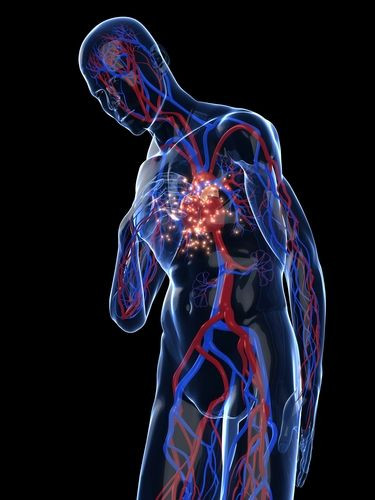The Heart's Self-Healing Process Inspires Scientists To Develop New Heart Attack Treatment

Researchers have recently discovered a unique potential of fibroblasts, cells that form scar tissues in the heart following a heart attack. They found that under certain circumstances these cells can transform themselves to epithelial cells that contribute to formation of blood vessels, and thus directly help in healing an injured heart. To further aid this transformation, the scientists developed a drug that acts directly on scar tissues, turning them to blood vessels. Their research has been published online in Nature.
"It is well known that increasing the number of blood vessels in the injured heart following a heart attack improves its ability to heal," said lead author Dr. Arjun Deb, in a press release. According to Deb, there is ample clinical evidence to suggest that more scar tissue results in worsening heart health.
Scar tissues are formed after a heart attack. Heart attacks generally occur when coronary arteries get blocked due to deposits of fats on the arterial walls. Due to this, the artery is unable to supply blood to an area of the heart muscle that gets damaged, resulting in heart attack.
After the attack, the damaged muscle turns to non-functional scar tissue, a process known as fibrosis. This scar tissue remains in the heart throughout a person’s life. Since scar tissue has been associated with poor prognosis, Deb says, scientists have been for years trying to reverse or prevent its formation.
Fibroblasts have been known for their wound healing capacity in the connective tissues in animals. But their role in healing an injured heart was established when Deb and his colleagues were observing the relationship between scar tissue and blood-vessel forming endothelial cells in mice heart. Through genetic labelling, they found that many of the scar tissues converted themselves to endothelial cells and contributed directly to blood vessel formation — a phenomenon they called mesenchymal-endothelial transition, or MEndoT.
The researchers also identified a molecular mechanism that regulated MEndoT. The drug they developed aids in this molecular mechanism and leads to less scarring and faster healing.
"There are remarkable similarities in the process of scarring in different organs after injury," Deb said. "Our hope is that this approach can be used to treat scar tissue in other organs as well."
Testing this on other animal models is the next step for the scientists, who see this discovery as a potential therapy to save the millions who die due to cardiac arrests each year.
In America alone, approximately 720,000 men and women suffer a heart attack each year and about 380,000 people die from it, warranting an urgent need to stop this giant killer.
Source: Deb A, et al, Nature. 2014.
Published by Medicaldaily.com



























